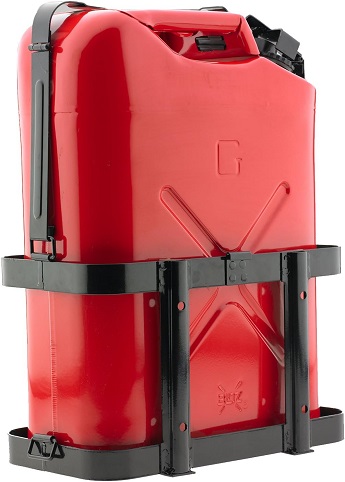CJ5 Engine Swap Choices
Article by Mark Trotta
Early CJ Jeeps (1954 to 1969) weigh about 2,200 pounds and have a short wheelbase. The best choice for an engine swap is not a V8.
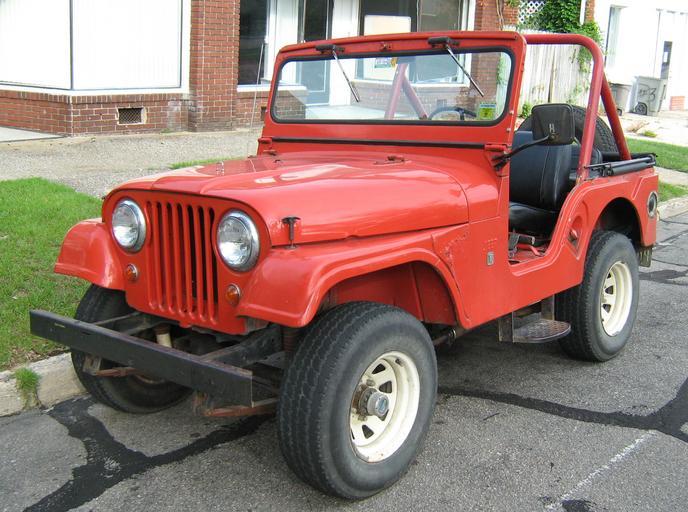
Aside from requiring too many modifications, it'll have more power than the rest of the vehicle can handle. And the fact that there just isn't a whole lot of room under the hood, a V6 or even a modern four-cylinder are clearly better choices.
Drivetrain Concerns
The stock Jeep drivetrain is rated at just 1/4 ton, which is roughly 500 pounds load capacity. To handle V8 power adequately would require replacing the transmission, axles, etc. Plus, the stock (50+ year old) frame wasn't designed to handle that power. You'd end up with a top-heavy vehicle that just spins tires.
____________________________________________
____________________________________________
Off-Roading Concerns
If you're planning on taking your Jeep off-road, be it mud or dirt or gravel, remember that speed isn't a factor. The added weight of a V8 on the front suspension will make for slower maneuvering, plus you're more likely to sink into mud (have a winch ready).
V6 Engine Swap
A V6 engine will give you all the power that a lightweight, short-wheelbase Jeep can handle. Additionally, a V6 configuration (versus a straight six engine) makes for a relatively compact motor, which fits easier into a tight engine compartment. This is of particular concern with early flat-fender models.
The two most common V6 swaps are the 225ci Buick and 4.3L Chevy.
********************
Buick V-6 Engine
Introduced in 1966 in Jeep CJ and C101 models, the Buick-designed "Dauntless V-6" displaces 225 cubic-inches and produced 155 horsepower in stock trim. That's nearly double the horsepower of the original four-cylinder engine. Since this motor was offered optionally in CJ models from 1966-1971, it's a fairly easy install.
The block and cylinder heads of the 225 V6 are cast iron, and the motor is externally balanced. The valve lifters are mechanical, so they'll need adjustment from time to time.
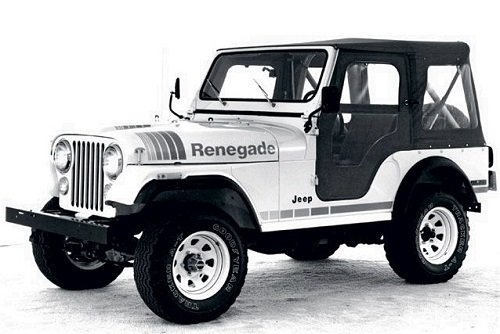
The Buick engine's firing order, 1-6-5-4-3-2, is known as an "odd-fire" pattern. The heavier, thicker original flywheel must be used in Jeep vehicles, which increases torque and helps dampen vibrations of the odd-fire design.
____________________________________________
____________________________________________
Chevy V-6 Engine
Another good engine swap choice for early Jeeps is the 4.3 litre Chevy V6. Introduced in 1985, this motor is basically a small-block Chevy V8 with the back two cylinders cut off, so parts availability is excellent. It's compact size fits well in vintage Jeeps.
A popular engine/transmission combo is a Chevy 4.3 V6 with a GM TH350 automatic.
********************
AMC 2.5 Four Cylinder
Known to be durable with no reliability issues, the AMC 2.5L was the motor that powered our old 1989 Jeep Wrangler. Truthfully, I always thought it was under-powered on the highway, but it was great for around town or off-roading.
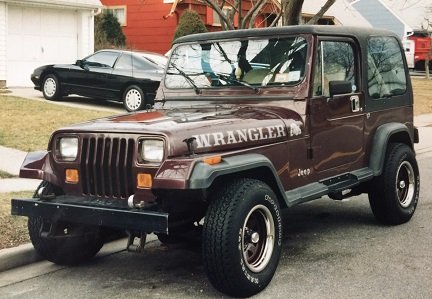
Any AMC 2.5 engine will accept GM small V6 and four-cylinder bolt pattern bell housings. These bell housings are found on many GM transverse-mounted engines.
Another popular engine/trans combo is the AMC 2.5L motor and Borg-Warner T-5 transmission.
********************
AMC 4.0L Straight-Six
If the AMC 2.5L had two more cylinders, it would be the 4.0 motor. These motors were installed in Jeeps from 1987–2006, making them plentiful and cheap.
Four Cylinder Iron Duke Engine
Produced by the Pontiac Motor Division from 1977 to 1993, the 2.5L (151ci) "Iron Duke" was the predecessor of the AMC 2.5L engine. In the eighties, GM began selling the engine to AMC for use in Spirit, Concord and Eagle models, and also in base-model CJ's. The engines in AMC vehicles continued to use the Chevrolet V8 bell housing pattern.
____________________________________________
____________________________________________
Several significant changes were made to the Iron Duke motor in 1987, including an improved cylinder head and serpentine belt with an automatic spring-loaded tensioner. Through the years, power output went from 85 horsepower up to 110 horsepower.
Installing The Motor Is Only The Beginning
Installing different engine mounts and bolting up the motor is only the first step in the engine swap process. After that, a multiple series of "mini projects" begins, including hooking up the transmission, cooling and exhaust systems, and wiring it all up.
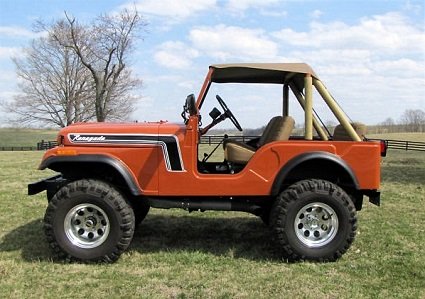
At this point, you may consider upgrading the brakes and suspension.
********************
Transmission Choices
No engine swap discussion is complete without talking about transmission compatibility. The following are manual transmission choices:
Borg-Warner T14
The B-W T14 transmission is a light-duty, manual three-speed, and offered in Jeeps through 1975. It served as the base transmission with AMC 232 and 258 I6 engines.
The T14 transmission is 8-11/16" long and the main case is cast iron. If needed, companies such as Novak offer adapter assemblies.
Borg-Warner T15
The B-W T15 is a medium-duty, manual three-speed transmission. Not only was it offered in CJ Jeeps through 1975, it was also found in full-size Jeeps through 1979. The T15 was fitted behind AMC V8 engines as base transmission, and optional with AMC 232 and 258 I6 engines.
Borg-Warner T18
The B-W T18 transmission is a heavy-duty, manual four-speed, and also found in various Jeeps, Ford trucks and I-H trucks. The T18 is synchronized in 2nd through 4th gears.
GM Muncie SM420
The SM420 is a heavy-duty four-speed manual transmission. It was produced by General Motors and found in light- and medium-duty trucks from from 1947 to 1967. The SM420 also saw use in U.S. Military vehicles as late as the early 1980s.
A standard Buick V6 bell-housing will bolt up to an SM420, making that an easy transmission swap. Installing an SM420 behind other motors will require an adapter, which can be obtained by companies such as Novak.
********************
Conclusion
A four-cylinder engine will provide adequate power for off-roading or around town driving. It will also give you the best fuel mileage that you can get from an old Jeep. But for those who do a lot of highway driving, or want better acceleration, a six-cylinder would be a good choice.
********************
Related Articles:
Engine Swap Basics
Best Old Jeep To Restore
Jeep CJ History (1970-1986)
6-Volt To 12-Volt Conversion
